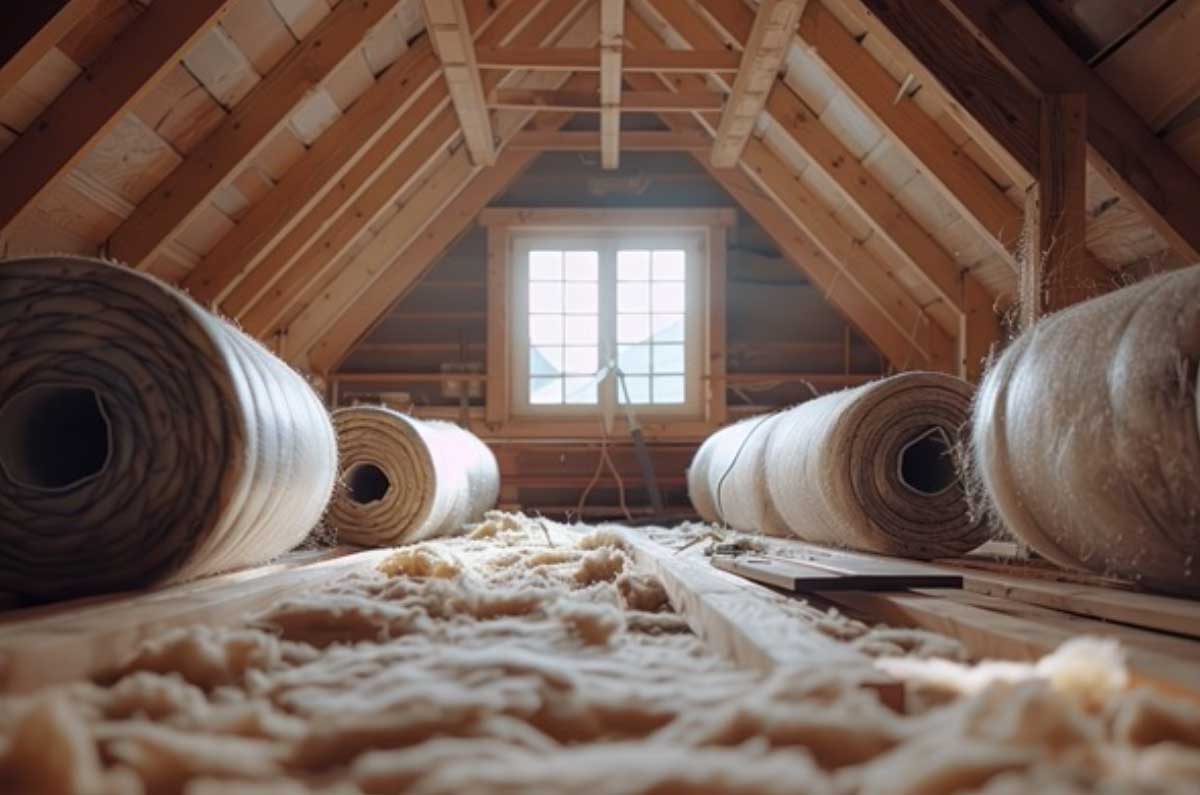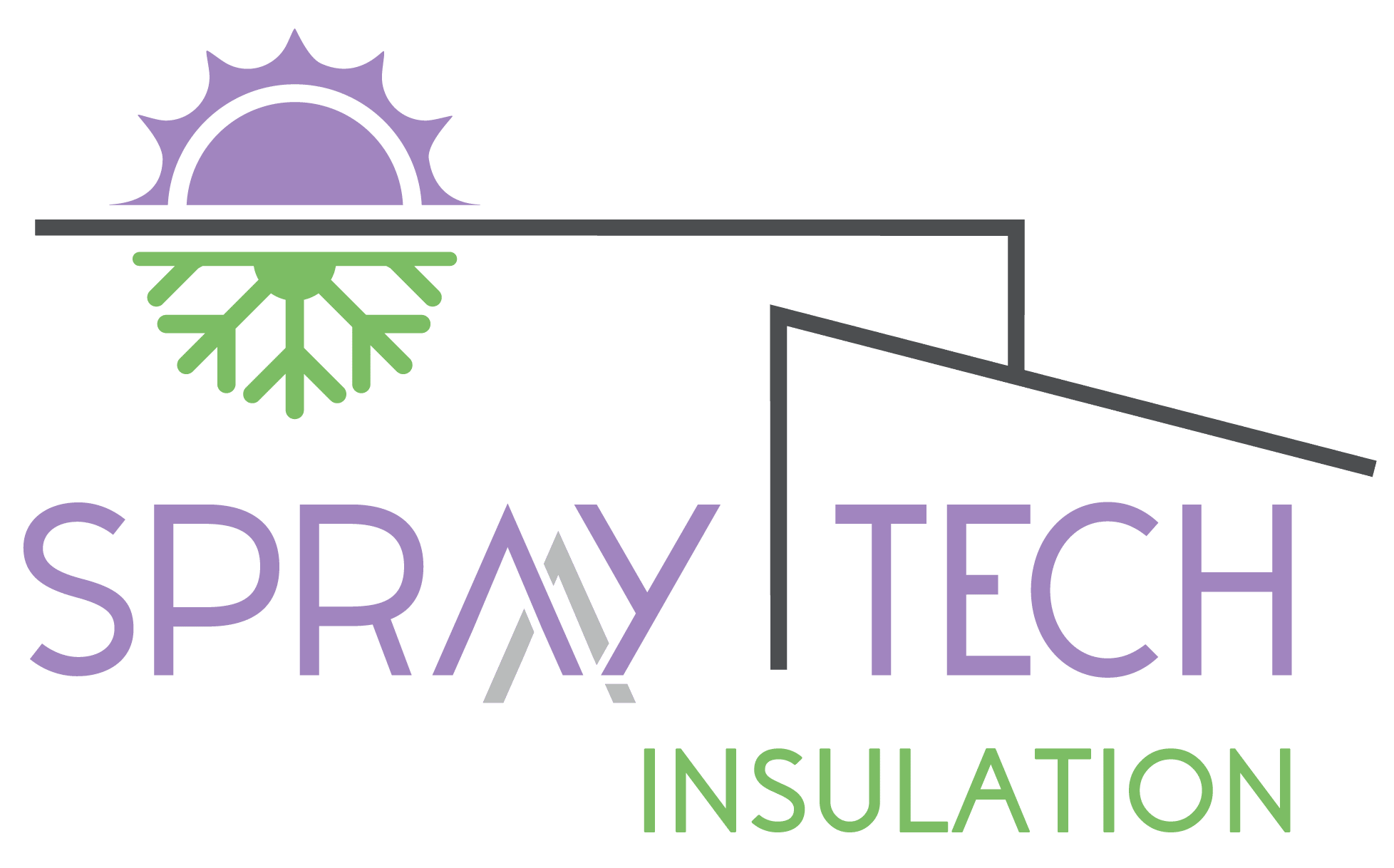
Attic insulation is crucial for energy efficiency and home comfort, with various types available including spray foam, fiberglass, and cellulose insulation. Spray foam insulation, particularly, stands out for its superior insulating properties, air sealing capabilities, and long-term energy savings. Open-cell spray foam offers moisture permeability and excellent air sealing, while closed-cell spray foam provides a higher R-value, acts as a vapor barrier, and offers structural reinforcement. Fiberglass and cellulose insulation are cost-effective and eco-friendly options, respectively.
For optimal performance and durability, Spray-Tech Insulation offers expert spray foam insulation services for attics, ensuring enhanced energy efficiency and home comfort. Let’s dive into the details of the different types of insulations for attics.
1. Spray Foam Insulation
Spray foam insulation is renowned for its superior insulating properties and ability to create an airtight seal, making it an excellent choice for attic insulation. This insulation type comes in two varieties: open-cell and closed-cell spray foam.
Open-Cell Spray Foam
Open-cell spray foam is a versatile insulation option with several beneficial characteristics:
- R-Value: The R-value of open-cell spray foam ranges from R-3.5 to R-4 per inch, providing efficient thermal resistance.
- Moisture Permeability: Open-cell spray foam allows some moisture permeability, making it suitable for hot and humid climates. It helps manage moisture levels and prevents condensation issues.
- Air Sealing: This type of insulation expands to fill cavities and crevices, providing excellent air sealing properties that enhance energy efficiency and indoor comfort.
Moisture Management in Attic Insulation
Different insulation types handle moisture in various ways. Open-cell spray foam’s permeability allows it to manage moisture effectively, preventing condensation and related issues. This characteristic makes it ideal for hot and humid climates where moisture control is crucial.
Air Sealing and Energy Efficiency
Effective air sealing is essential for reducing energy consumption and improving indoor air quality. Open-cell spray foam expands to fill gaps and cracks, creating an airtight barrier that minimizes air leakage and drafts, thereby enhancing the overall energy efficiency of your home.
Closed-Cell Spray Foam
Closed-cell spray foam offers higher density and exceptional performance, with distinct advantages:
- R-Value: Boasting an R-value of around R-6 per inch, closed-cell spray foam provides superior thermal insulation.
- Vapor Barrier: This insulation type acts as a vapor barrier, preventing moisture infiltration and protecting the structural integrity of your home.
- Structural Reinforcement: Closed-cell spray foam adds structural reinforcement to the building assembly, enhancing durability and stability.
Vapor Barriers and Moisture Control in Homes
Vapor barriers are essential for maintaining a dry and healthy living environment. Closed-cell spray foam’s vapor barrier properties prevent moisture from infiltrating your home, reducing the risk of mold growth and structural damage.
Structural Benefits of Different Insulation Types
Insulation materials contribute to the overall strength and stability of your home. Closed-cell spray foam not only insulates but also reinforces the structure, providing added durability and resistance to various environmental factors.
Additional Information on Spray Foam Insulation
While spray foam insulation may have higher upfront costs, it offers significant long-term energy savings due to its superior insulating capabilities. Concerns about off-gassing can be mitigated by using low-VOC formulations and following proper ventilation protocols during and after installation.
2. Fiberglass Insulation
Fiberglass insulation is a popular and cost-effective option for attic insulation, available in two main forms:
Fiberglass Batts
Fiberglass batts are precut sections designed to fit between framing members, offering several benefits:
- Ease of Installation: Fiberglass batts are easy to install, making them a suitable choice for DIY projects.
- R-Value: The typical R-value range for fiberglass batts is R-3 to R-4 per inch, providing decent thermal resistance.
DIY Attic Insulation Projects
Fiberglass batts are ideal for homeowners interested in DIY projects. Their precut design simplifies the installation process, making it manageable even for those with limited experience. Proper installation ensures optimal insulation performance and energy efficiency.
Comparing Batt Insulation Materials
When considering batt insulation, it’s essential to compare different materials. Fiberglass batts offer a balance of cost-effectiveness and performance, but other materials like mineral wool may provide additional benefits such as fire resistance and soundproofing.
Blown-in Fiberglass
Blown-in fiberglass is a loose-fill insulation that is blown into attic spaces, offering better coverage and insulation than batts:
- Comprehensive Coverage: Blown-in fiberglass provides more uniform coverage, filling gaps and hard-to-reach areas.
- R-Value: The R-value range for blown-in fiberglass is R-2.5 to R-4 per inch.
Benefits of Loose-Fill Insulation
Loose-fill insulation, like blown-in fiberglass, provides comprehensive coverage that batt insulation might miss. This method ensures that all gaps and cavities are filled, resulting in better overall insulation performance and energy efficiency.
Installation Process of Blown-in Insulation
The installation process for blown-in insulation involves using specialized equipment to blow the loose-fill material into the attic space. This process requires professional expertise to ensure even distribution and optimal coverage, enhancing the insulation’s effectiveness.
3. Cellulose Insulation
Cellulose insulation is an eco-friendly option made from recycled materials like newspapers and cardboard. It offers several notable features:
- R-Value: Cellulose insulation typically provides an R-value of around R-3.5 to R-3.8 per inch.
- Eco-Friendly: Made from recycled materials, cellulose insulation is an environmentally responsible choice.
- Fire, Mold, and Pest Resistance: Treated with boric acid, cellulose insulation resists fire, mold, and pests, ensuring a safer and healthier living environment.
Eco-Friendly Insulation Options
Cellulose insulation stands out as a sustainable choice due to its use of recycled materials. Choosing eco-friendly insulation options helps reduce environmental impact and promotes sustainability in home construction and renovation.
Fire, Mold, and Pest Resistance in Insulation Materials
The treatment of cellulose insulation with boric acid enhances its resistance to fire, mold, and pests. These properties ensure that the insulation not only provides thermal resistance but also contributes to a safer and healthier living environment.
Conclusion
Each type of attic insulation offers unique benefits and characteristics, making it essential to choose the right one based on your specific needs and preferences. While fiberglass and cellulose insulation are cost-effective and eco-friendly options, spray foam insulation stands out for its superior insulating performance, air sealing capabilities, and potential for long-term energy savings.
If you’re considering upgrading your attic insulation, Spray-Tech Insulation specializes in high-quality spray foam insulation services. Contact us today to learn more about how spray foam insulation can enhance your home’s energy efficiency and comfort.
continue reading

